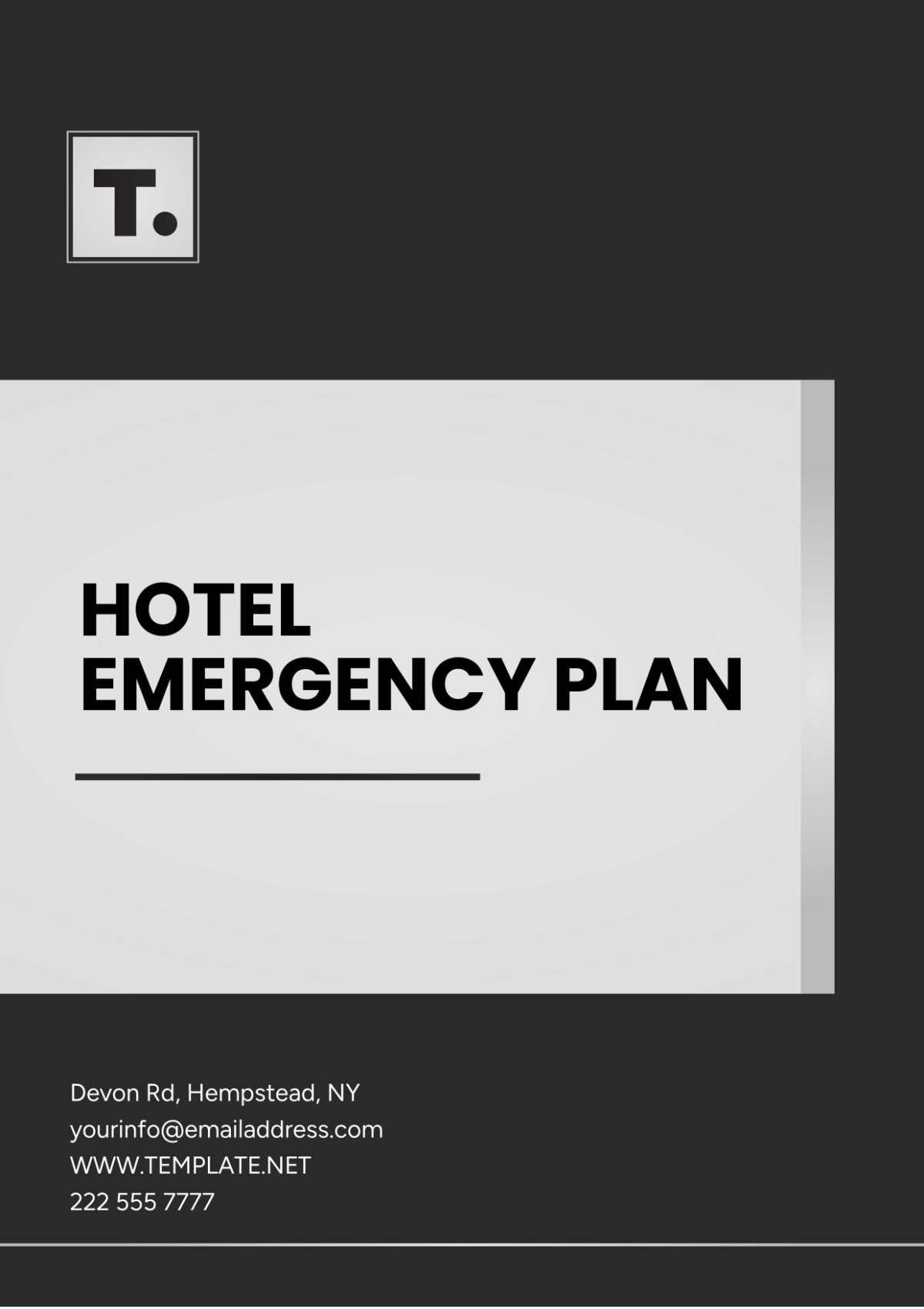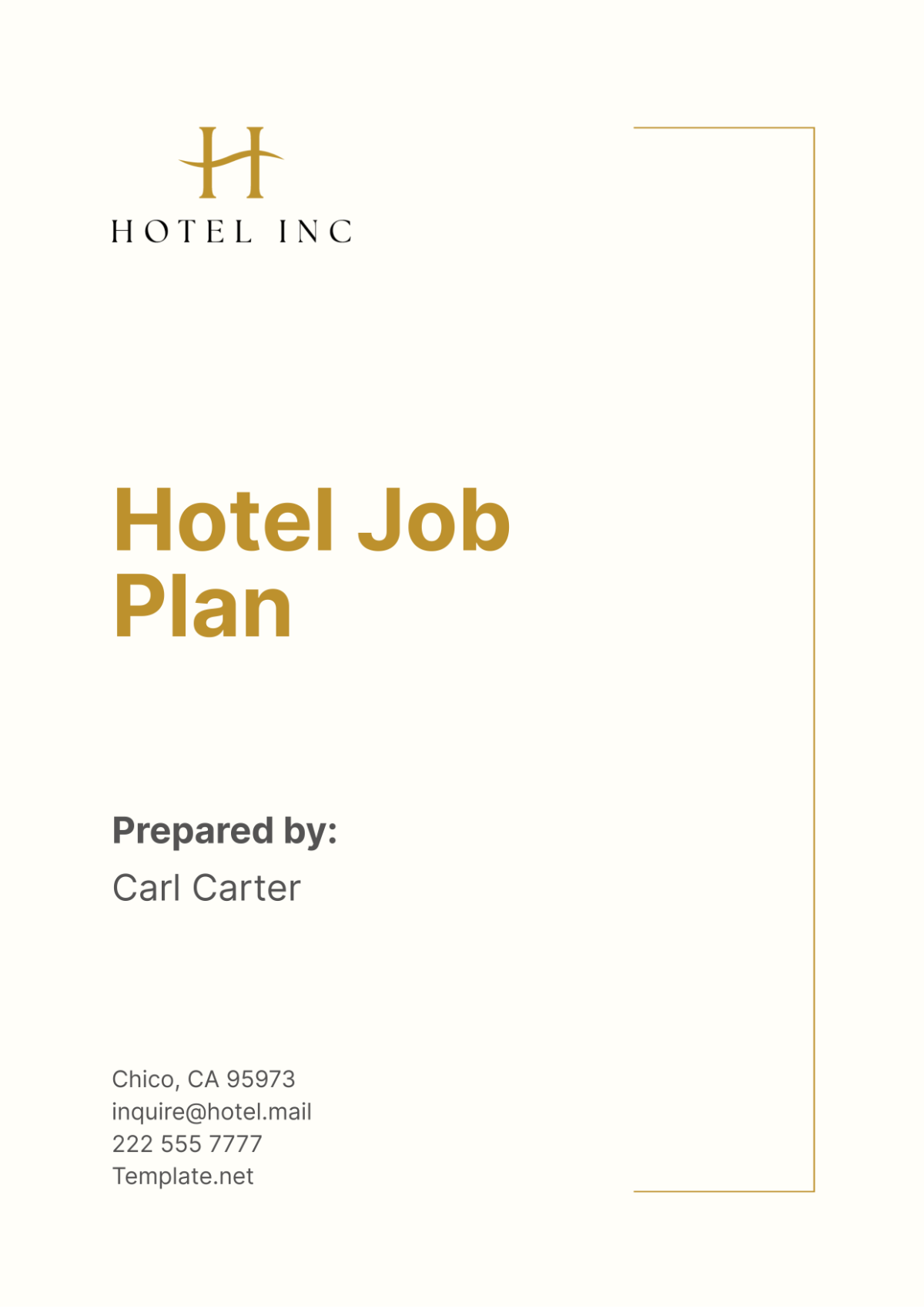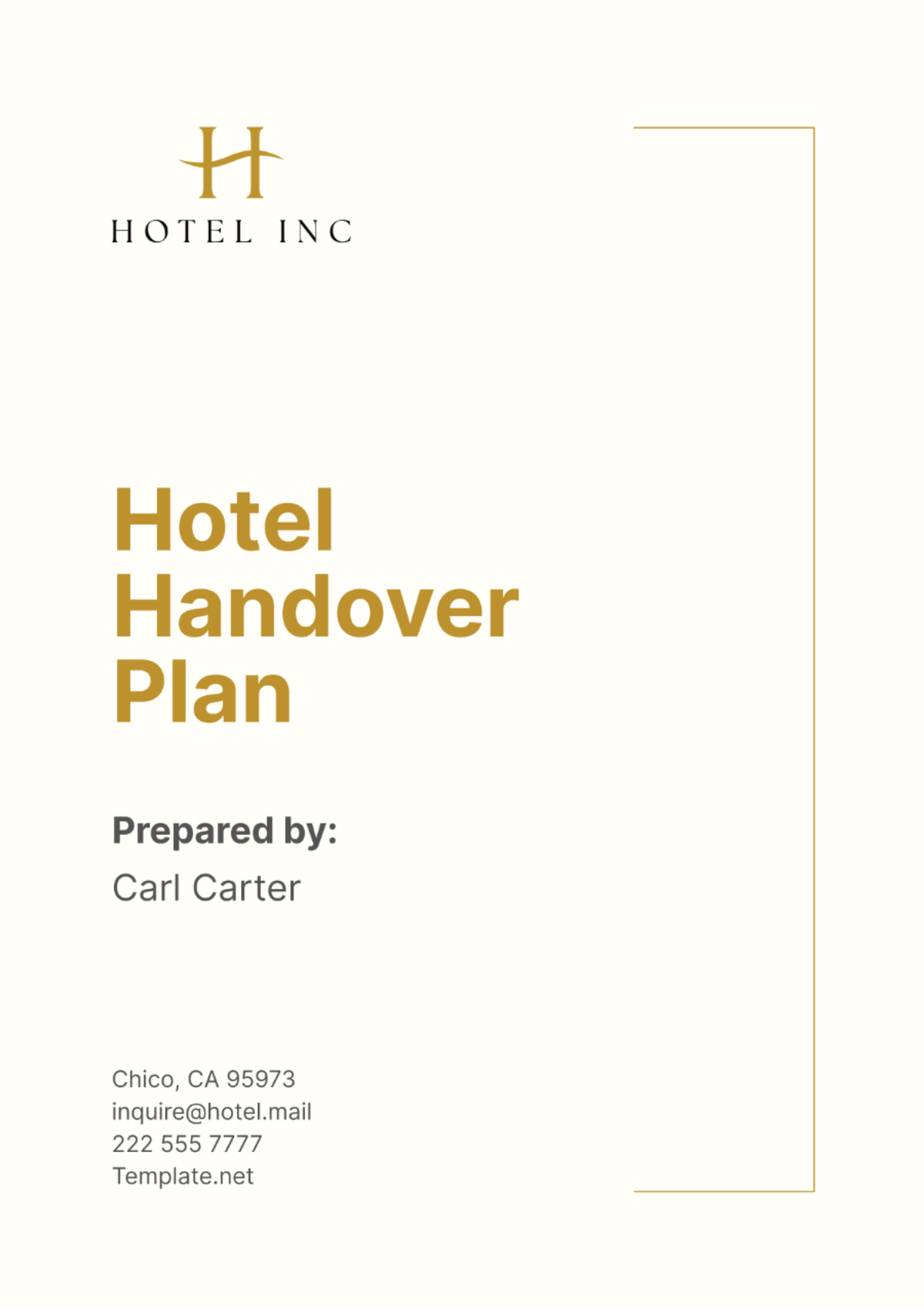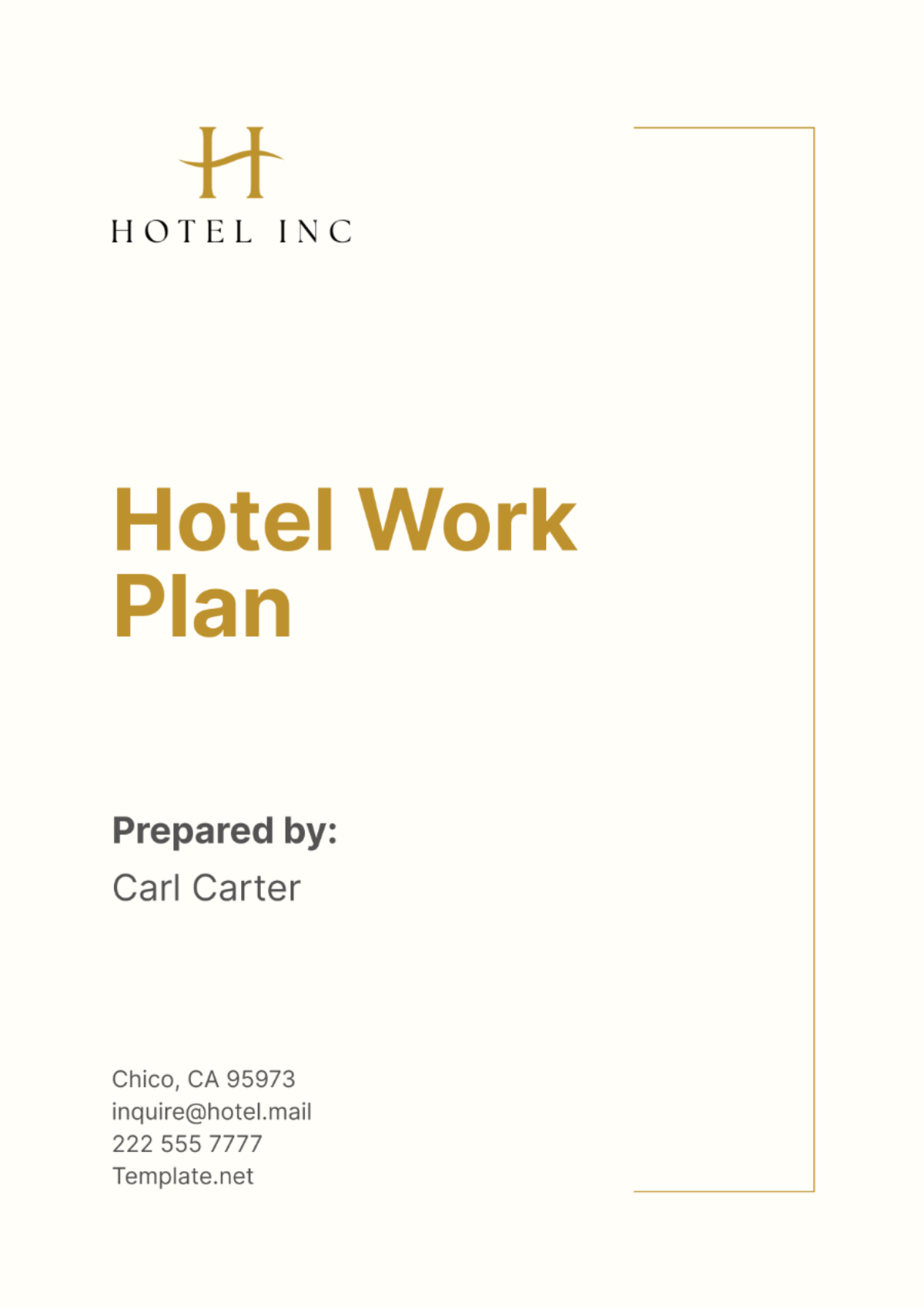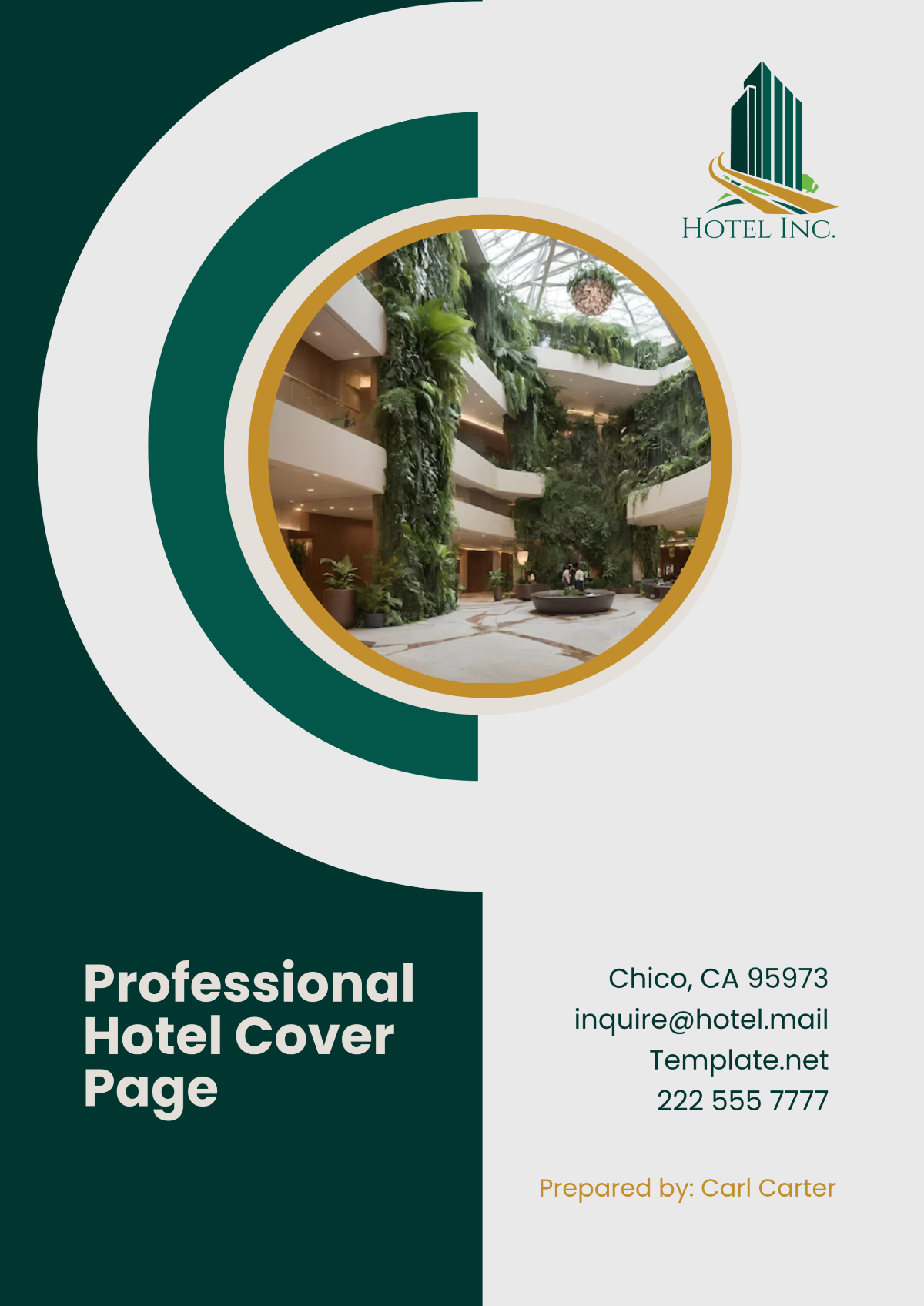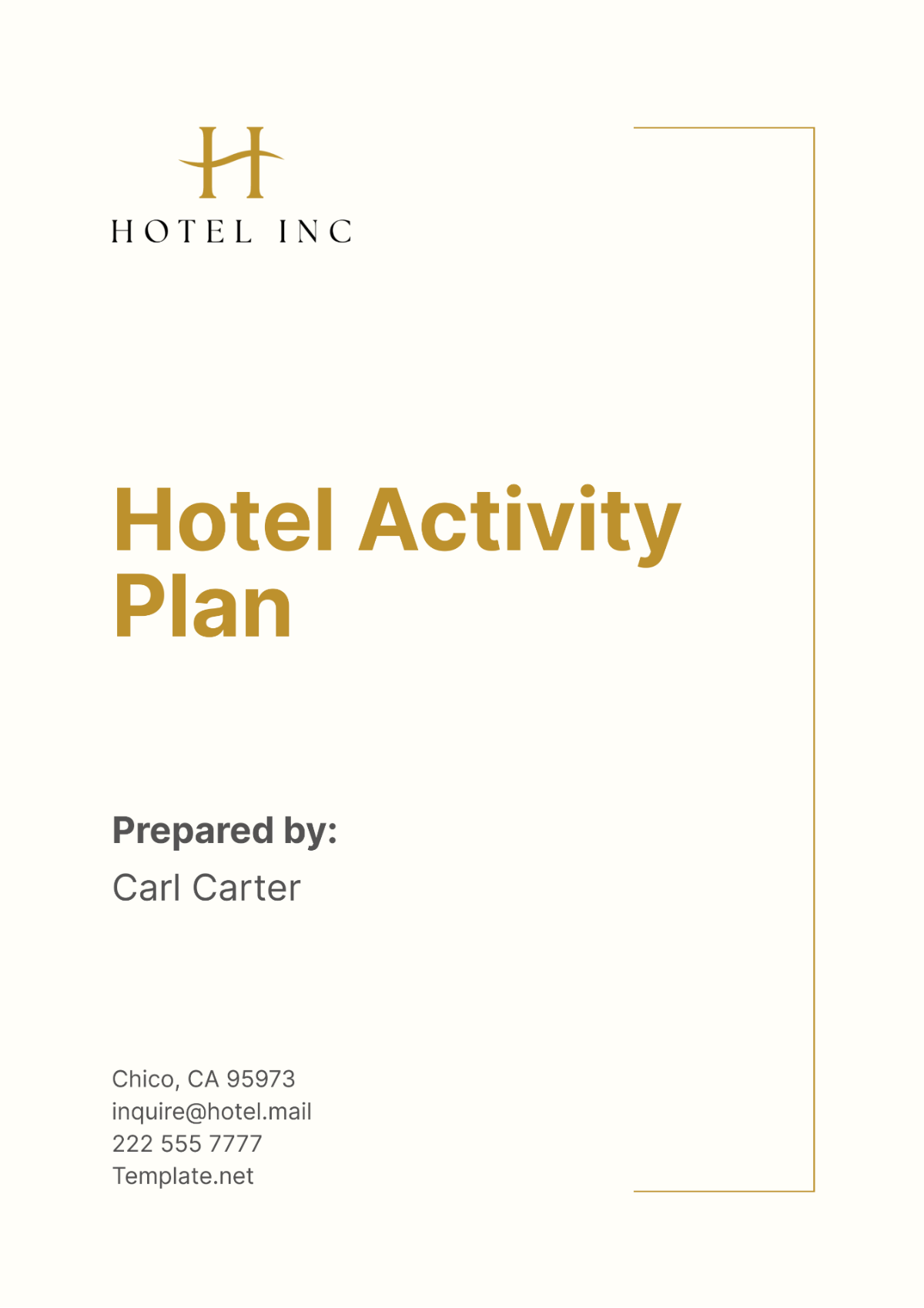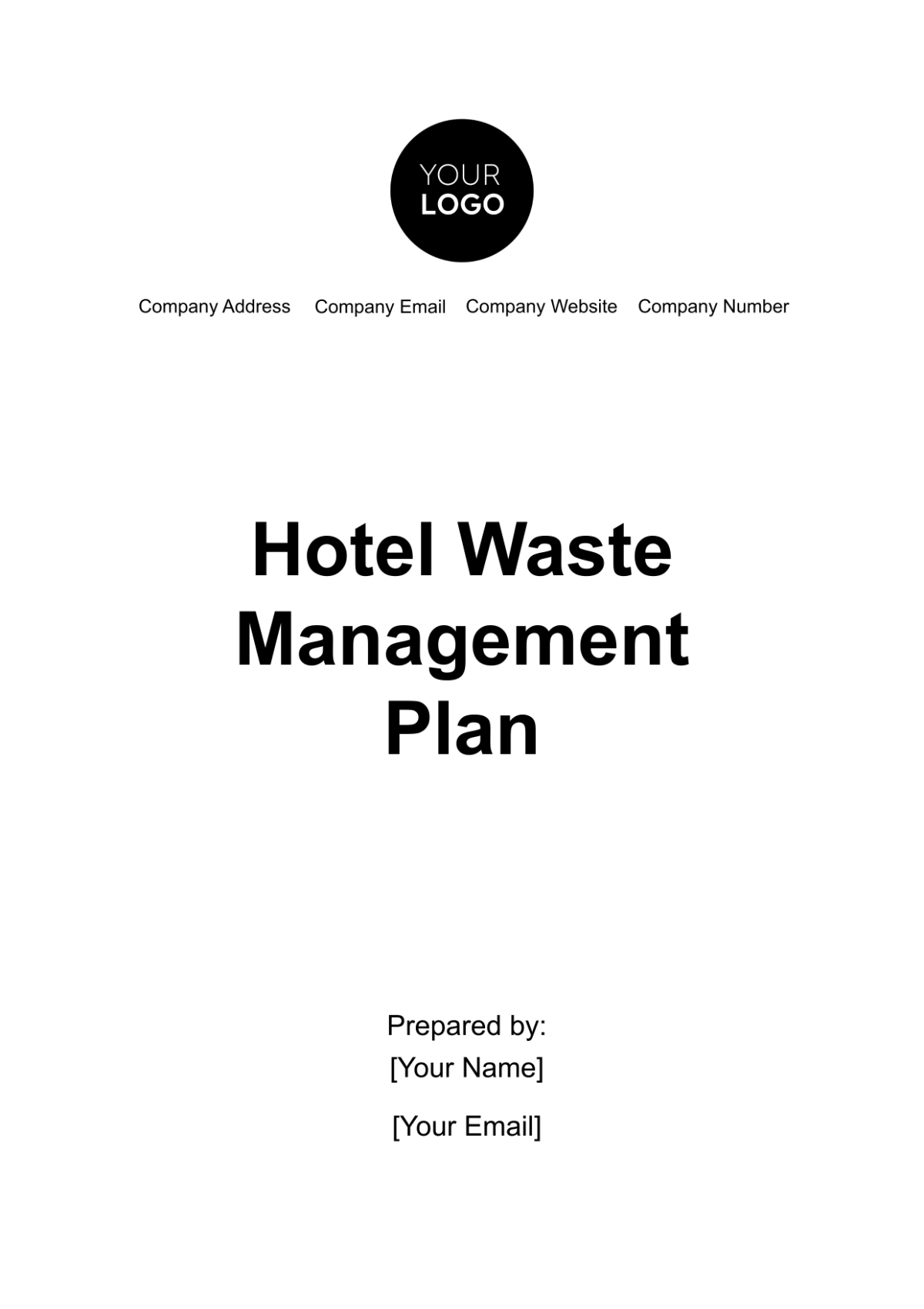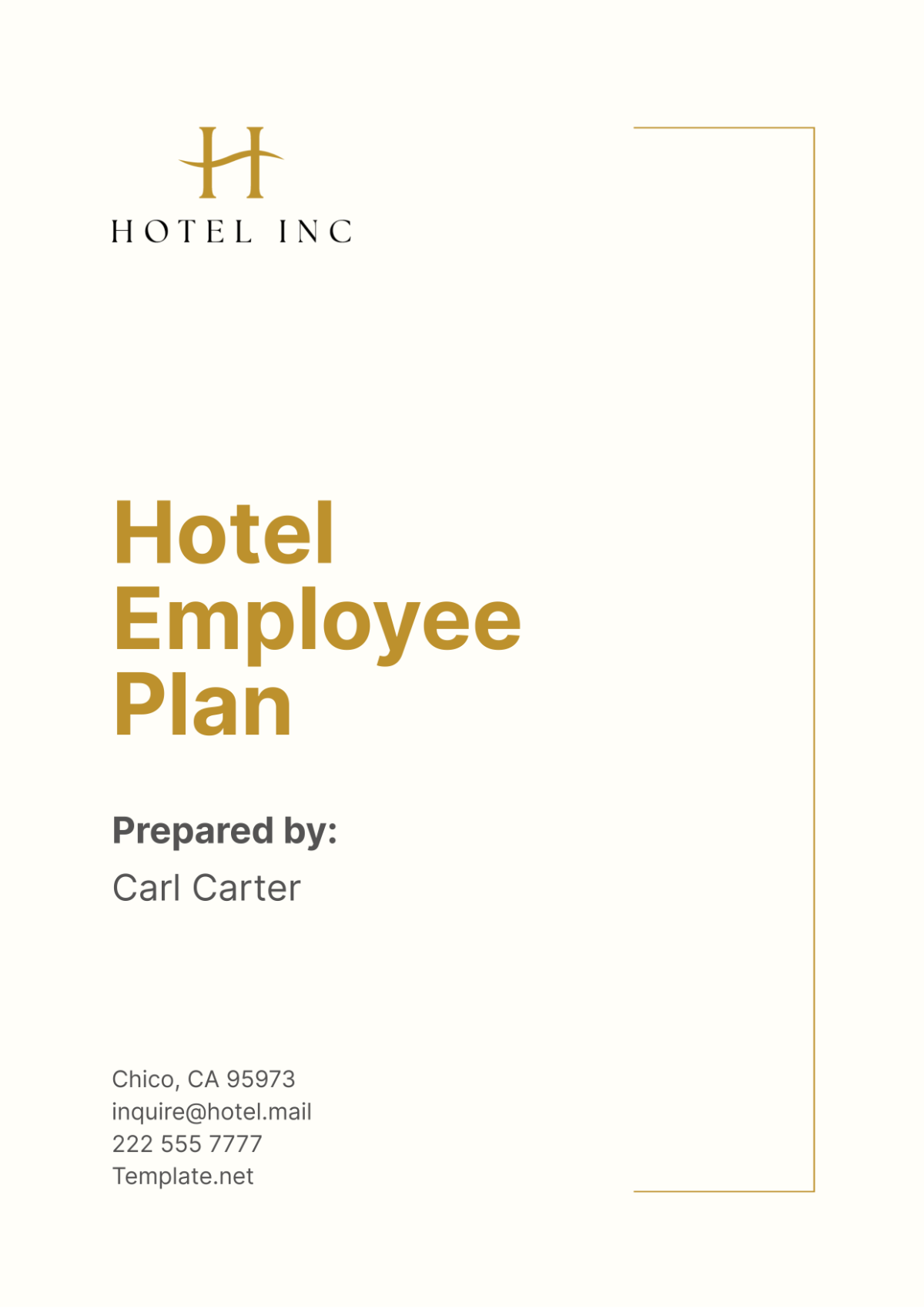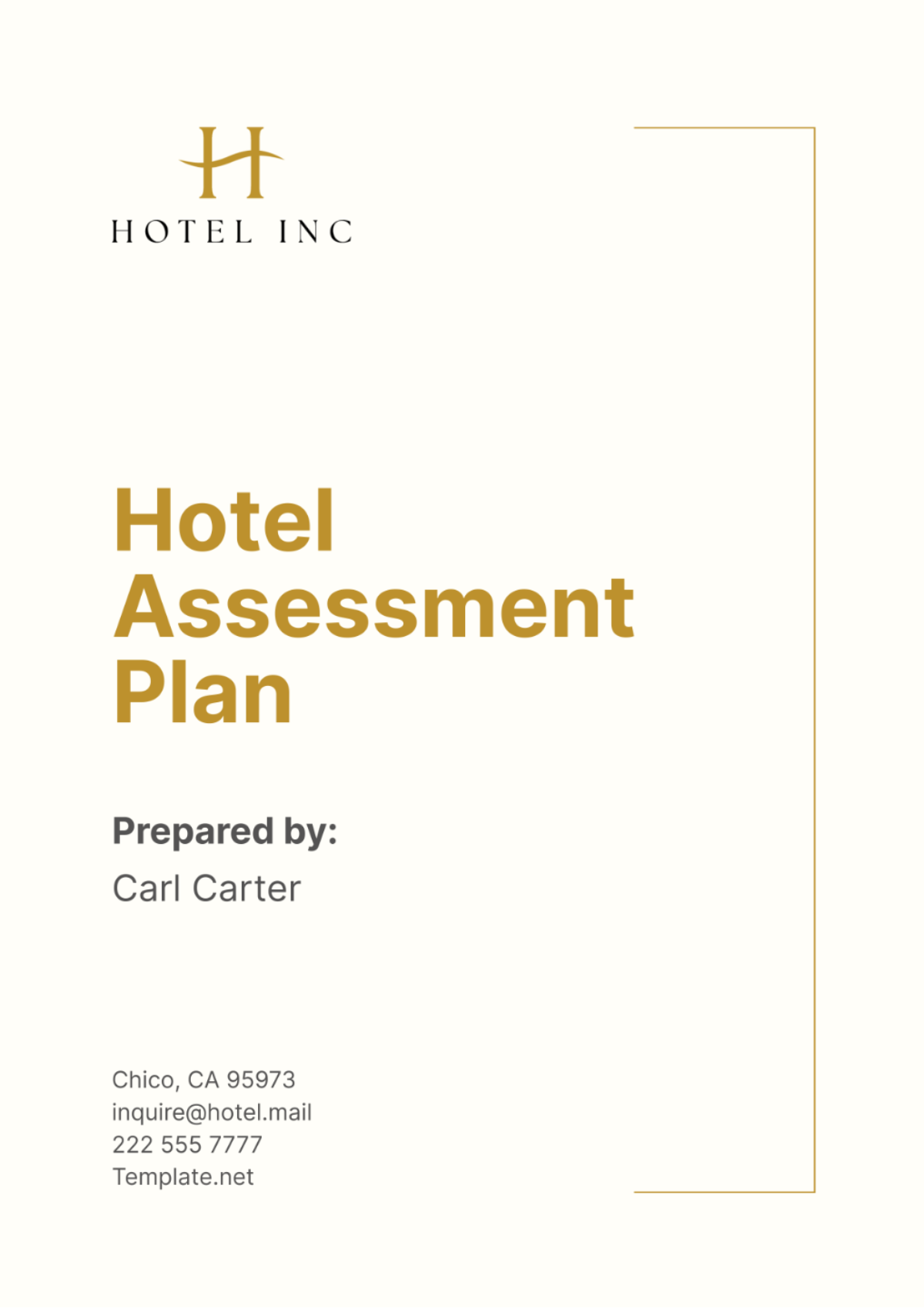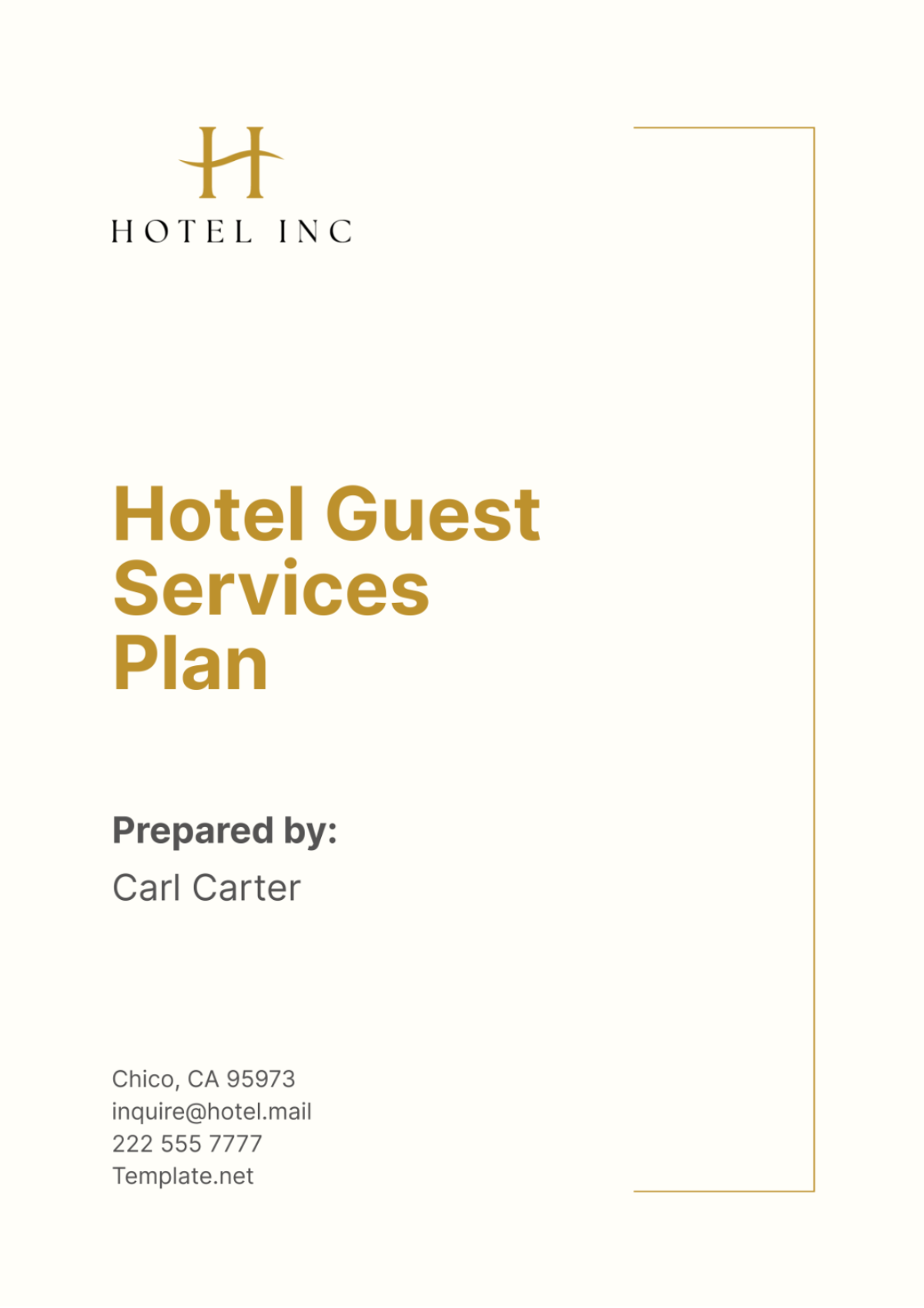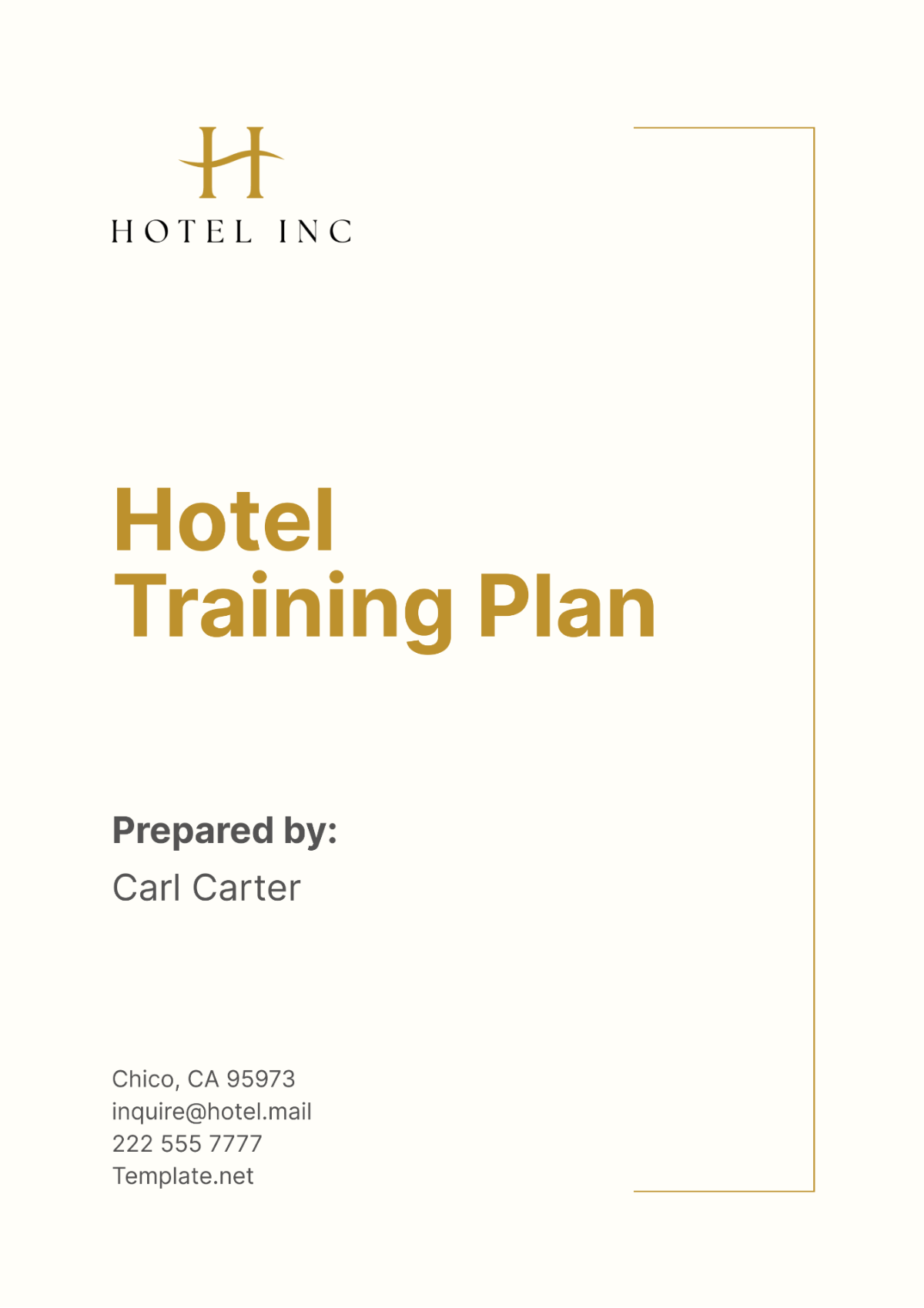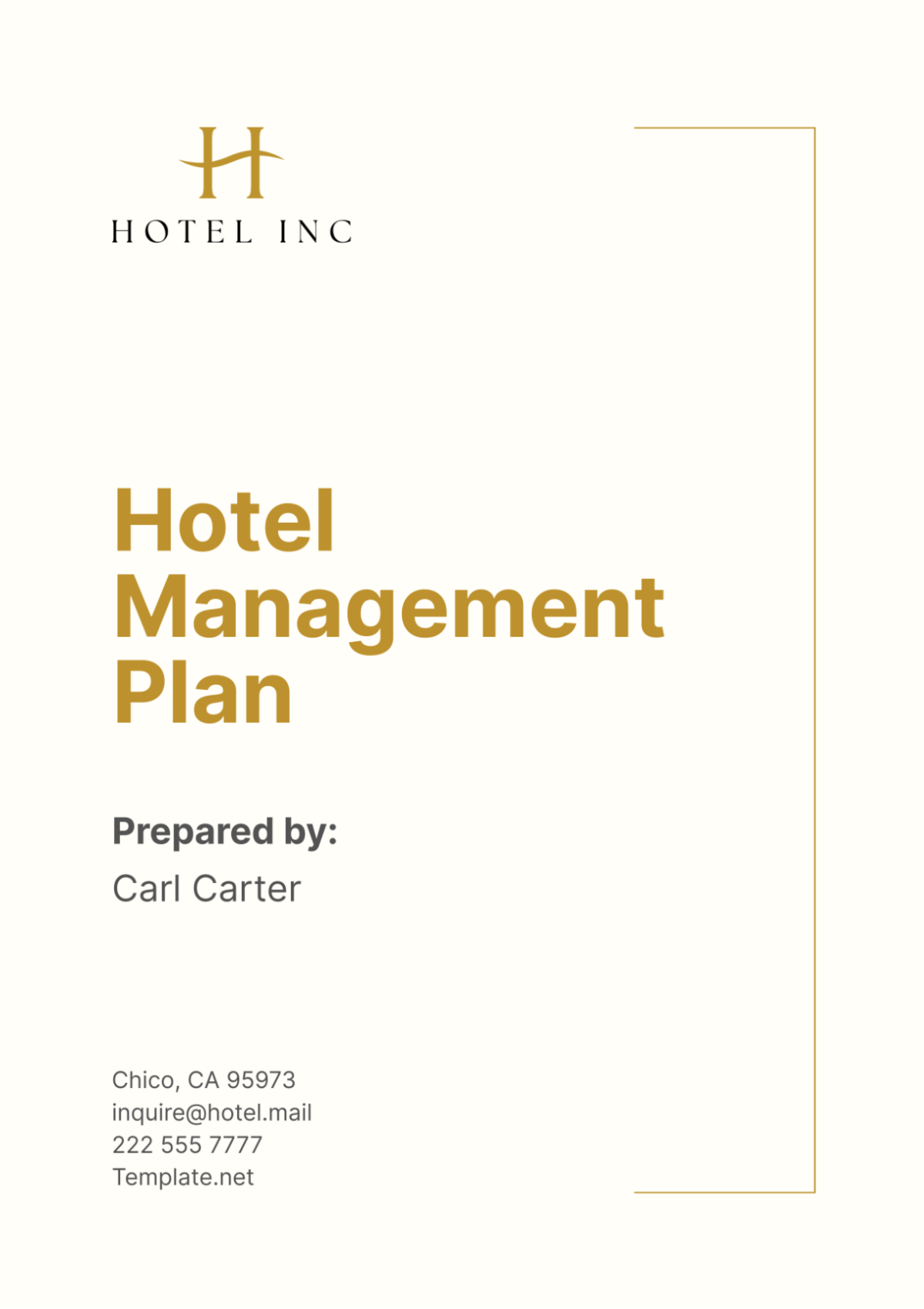Free Hotel Investigation Plan
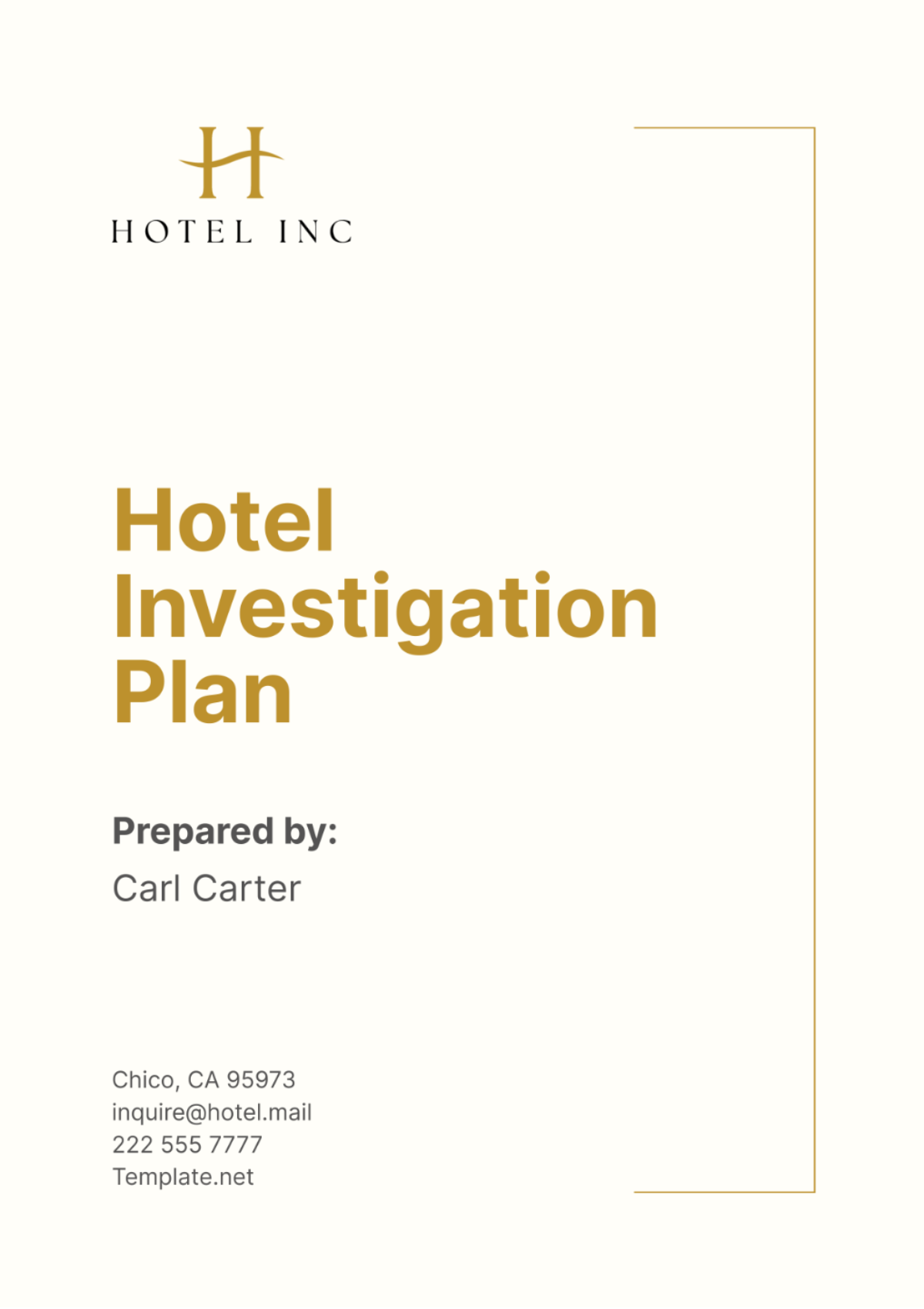
- 100% Customizable, free editor
- Access 1 Million+ Templates, photo’s & graphics
- Download or share as a template
- Click and replace photos, graphics, text, backgrounds
- Resize, crop, AI write & more
- Access advanced editor
Improve your hotel's incident management with the Hotel Investigation Plan Template from Template.net. This editable and customizable template, equipped with an AI Editor Tool, streamlines your investigation process. Effortlessly adapt protocols, training materials, and reporting procedures to fit your hotel's unique needs. Enhance security and guest satisfaction with this comprehensive solution.
You may also like
- Finance Plan
- Construction Plan
- Sales Plan
- Development Plan
- Career Plan
- Budget Plan
- HR Plan
- Education Plan
- Transition Plan
- Work Plan
- Training Plan
- Communication Plan
- Operation Plan
- Health And Safety Plan
- Strategy Plan
- Professional Development Plan
- Advertising Plan
- Risk Management Plan
- Restaurant Plan
- School Plan
- Nursing Home Patient Care Plan
- Nursing Care Plan
- Plan Event
- Startup Plan
- Social Media Plan
- Staffing Plan
- Annual Plan
- Content Plan
- Payment Plan
- Implementation Plan
- Hotel Plan
- Workout Plan
- Accounting Plan
- Campaign Plan
- Essay Plan
- 30 60 90 Day Plan
- Research Plan
- Recruitment Plan
- 90 Day Plan
- Quarterly Plan
- Emergency Plan
- 5 Year Plan
- Gym Plan
- Personal Plan
- IT and Software Plan
- Treatment Plan
- Real Estate Plan
- Law Firm Plan
- Healthcare Plan
- Improvement Plan
- Media Plan
- 5 Year Business Plan
- Learning Plan
- Marketing Campaign Plan
- Travel Agency Plan
- Cleaning Services Plan
- Interior Design Plan
- Performance Plan
- PR Plan
- Birth Plan
- Life Plan
- SEO Plan
- Disaster Recovery Plan
- Continuity Plan
- Launch Plan
- Legal Plan
- Behavior Plan
- Performance Improvement Plan
- Salon Plan
- Security Plan
- Security Management Plan
- Employee Development Plan
- Quality Plan
- Service Improvement Plan
- Growth Plan
- Incident Response Plan
- Basketball Plan
- Emergency Action Plan
- Product Launch Plan
- Spa Plan
- Employee Training Plan
- Data Analysis Plan
- Employee Action Plan
- Territory Plan
- Audit Plan
- Classroom Plan
- Activity Plan
- Parenting Plan
- Care Plan
- Project Execution Plan
- Exercise Plan
- Internship Plan
- Software Development Plan
- Continuous Improvement Plan
- Leave Plan
- 90 Day Sales Plan
- Advertising Agency Plan
- Employee Transition Plan
- Smart Action Plan
- Workplace Safety Plan
- Behavior Change Plan
- Contingency Plan
- Continuity of Operations Plan
- Health Plan
- Quality Control Plan
- Self Plan
- Sports Development Plan
- Change Management Plan
- Ecommerce Plan
- Personal Financial Plan
- Process Improvement Plan
- 30-60-90 Day Sales Plan
- Crisis Management Plan
- Engagement Plan
- Execution Plan
- Pandemic Plan
- Quality Assurance Plan
- Service Continuity Plan
- Agile Project Plan
- Fundraising Plan
- Job Transition Plan
- Asset Maintenance Plan
- Maintenance Plan
- Software Test Plan
- Staff Training and Development Plan
- 3 Year Plan
- Brand Activation Plan
- Release Plan
- Resource Plan
- Risk Mitigation Plan
- Teacher Plan
- 30 60 90 Day Plan for New Manager
- Food Safety Plan
- Food Truck Plan
- Hiring Plan
- Quality Management Plan
- Wellness Plan
- Behavior Intervention Plan
- Bonus Plan
- Investment Plan
- Maternity Leave Plan
- Pandemic Response Plan
- Succession Planning
- Coaching Plan
- Configuration Management Plan
- Remote Work Plan
- Self Care Plan
- Teaching Plan
- 100-Day Plan
- HACCP Plan
- Student Plan
- Sustainability Plan
- 30 60 90 Day Plan for Interview
- Access Plan
- Site Specific Safety Plan
Hotel Investigation Plan
I. Introduction
A. Purpose of the Investigation Plan
The purpose of this Investigation Plan is to establish standardized procedures and protocols for investigating incidents and issues that occur within [Your Company Name]. By implementing this plan, we aim to ensure the safety and security of our guests, staff, and property, as well as maintain the reputation and integrity of the hotel. Additionally, this plan serves to streamline the investigation process, ensuring thoroughness, consistency, and transparency in handling incidents.
B. Scope and Applicability
This Investigation Plan applies to all incidents and issues reported on the premises of [Your Company Name], including but not limited to security breaches, accidents, injuries, thefts, property damage, and guest complaints. It applies to all staff members involved in the investigation process, from initial reporting to follow-up actions. This plan also extends to external stakeholders, such as law enforcement agencies, regulatory bodies, and insurance providers, as necessary.
C. Definitions of Key Terms
Incident: Any event or occurrence that requires investigation, including but not limited to security breaches, accidents, injuries, thefts, property damage, and guest complaints.
Investigator: Designated individual(s) responsible for conducting investigations as outlined in this plan.
Evidence: Any information, documentation, physical items, or witness statements relevant to the investigation of an incident. Clear definitions of these terms are essential for ensuring consistent understanding and application throughout the investigation process.
II. Reporting Procedures
A. Reporting Channels
All incidents must be reported immediately to the [Designated Department/Individual] using the designated reporting channels, which include Front Desk and Security Office, etc. In case of emergencies or urgent situations, staff should contact [Emergency Number]. This ensures that incidents are promptly addressed and appropriate actions are taken to mitigate risks and ensure the safety of guests and staff.
B. Timelines for Reporting
Incidents must be reported as soon as possible after they occur, preferably within [00] minutes of the incident. Delayed reporting may compromise the effectiveness of the investigation and appropriate response. Clear timelines for reporting help to ensure that incidents are not overlooked or neglected, allowing for timely intervention and resolution.
C. Required Information in Incident Reports
Staff members reporting incidents must provide detailed information, including:
Date, time, and location of the incident
Description of the incident
Names and contact information of involved parties and witnesses
Any relevant physical evidence or documentation. Gathering comprehensive information at the outset of an investigation facilitates thorough analysis and enables investigators to make informed decisions based on the available evidence.
III. Investigation Team
A. Designation of Investigator(s)
The [Designated Team] will designate trained individuals to serve as investigators for each incident. These investigators will have the authority to conduct interviews, gather evidence, and make recommendations for corrective actions. Designating specific individuals ensures accountability and expertise in conducting thorough investigations.
B. Training and Qualifications
Investigators will receive specialized training in investigation techniques, evidence collection, interview skills, and legal considerations. They will also undergo regular refresher training to maintain their skills and stay updated on best practices. Training and qualifications are essential to ensure that investigators have the necessary knowledge and skills to conduct impartial and effective investigations.
C. Roles and Responsibilities
Lead Investigator: Responsible for overseeing the investigation process, coordinating with relevant departments, and ensuring that all necessary steps are taken.
Team Members: Assist the lead investigator in collecting evidence, conducting interviews, and documenting findings.
Management Oversight: Management will provide support and oversight throughout the investigation process, ensuring compliance with policies and procedures. Clear delineation of roles and responsibilities helps to streamline the investigation process and ensure that all aspects of the investigation are addressed effectively.
IV. Documentation
A. Types of Evidence to Collect
Evidence may include physical items, such as photographs, videos, or damaged property, as well as documentary evidence, such as incident reports, guest statements, or surveillance footage. Each type of evidence provides valuable information that contributes to the overall understanding of the incident. Collecting a variety of evidence ensures a comprehensive investigation and enhances the reliability of findings.
B. Procedures for Documenting Evidence
Investigators must carefully document all evidence collected, including the date, time, and location of collection, as well as the chain of custody. This documentation helps to establish the integrity and authenticity of the evidence and ensures its admissibility in any potential legal proceedings. Consistent and thorough documentation is essential for maintaining the credibility and reliability of the investigation process.
C. Chain of Custody Protocols
Chain of custody protocols outline the procedures for handling and storing evidence from the time it is collected until it is presented in court or disposed of. These protocols ensure that the integrity and admissibility of the evidence are preserved and protect against tampering or contamination. Adhering to strict chain of custody protocols is crucial for maintaining the credibility of the investigation and ensuring that evidence is handled in a manner consistent with legal requirements.
V. Interview Procedures
A. Preparation for Interviews
Before conducting interviews, investigators should review relevant information and evidence related to the incident to ensure they are adequately prepared. They should also establish a conducive environment for interviews, ensuring privacy and confidentiality for all parties involved. Adequate preparation helps to facilitate productive interviews and ensures that all relevant information is obtained.
B. Conducting Interviews
During interviews, investigators should use open-ended questions to elicit detailed responses from witnesses and involved parties. They should also actively listen and document responses accurately and objectively. Conducting interviews in a professional and empathetic manner encourages cooperation and helps to establish rapport with interviewees.
C. Documentation of Witness Statements
After each interview, investigators should document witness statements in writing, ensuring accuracy and completeness. Statements should include the date, time, and location of the interview, as well as the names and roles of all participants. Documenting witness statements in a timely and thorough manner preserves the information obtained and serves as valuable evidence in the investigation process.
VI. Evidence Preservation
A. Preservation Techniques for Different Types of Evidence
Different types of evidence require specific preservation techniques to maintain their integrity and admissibility. For example, physical evidence should be photographed, tagged, and stored in secure containers to prevent contamination or tampering. Digital evidence, such as surveillance footage, should be copied and stored in a secure digital format to prevent alteration or loss.
B. Securing the Scene
Upon discovery of an incident, investigators should secure the scene to prevent unauthorized access and preserve evidence. This may involve cordoning off the area, restricting entry, and documenting the scene before any alterations occur. Securing the scene helps to maintain the integrity of the evidence and ensures that critical information is not lost or compromised.
C. Access Control and Chain of Custody
Access to evidence should be restricted to authorized personnel only, and a detailed chain of custody should be maintained for all items collected. This includes documenting each instance of evidence handling, transfer, and storage, as well as the names of individuals involved. Strict access control and chain of custody procedures help to prevent tampering, loss, or contamination of evidence and enhance its reliability and admissibility in legal proceedings.
VII. Analysis and Evaluation
A. Root Cause Analysis
Investigators will conduct a thorough analysis of all collected evidence to identify the root causes of the incident. This may involve examining contributing factors such as human error, equipment failure, environmental conditions, or procedural deficiencies. By identifying root causes, the hotel can implement targeted corrective actions to prevent similar incidents from occurring in the future.
B. Assessing Witness Credibility
Investigators will assess the credibility of witness statements based on consistency, plausibility, and corroborating evidence. This evaluation helps to determine the reliability of witness accounts and the weight to be given to their testimony in the investigation. Assessing witness credibility ensures that the investigation is based on accurate and trustworthy information.
C. Identifying Contributing Factors
In addition to identifying root causes, investigators will identify any contributing factors that may have influenced the occurrence or severity of the incident. This may include systemic issues, policy gaps, communication breakdowns, or other underlying issues. Understanding contributing factors allows the hotel to address broader issues and implement systemic improvements to enhance safety and security.
VIII. Corrective Actions
A. Recommendations for Preventive Measures
Based on the findings of the investigation, investigators will make recommendations for preventive measures to mitigate the risk of similar incidents in the future. This may include changes to policies, procedures, training programs, or physical security measures. Recommendations will be tailored to address specific vulnerabilities identified during the investigation.
B. Implementation Plan for Corrective Actions
Management will develop an implementation plan to enact the recommended corrective actions in a timely and effective manner. This plan will outline responsibilities, timelines, and resource requirements for each action item. Implementing corrective actions demonstrates the hotel's commitment to continuous improvement and proactive risk management.
C. Monitoring and Follow-Up Procedures
Management will establish procedures for monitoring the effectiveness of implemented corrective actions and conducting follow-up investigations as necessary. This may involve tracking key performance indicators, conducting audits, or soliciting feedback from staff and guests. Monitoring and follow-up procedures ensure that corrective actions are achieving the desired outcomes and identify any additional measures that may be needed.
IX. Communication Protocol
A. Internal Communication Channels
Clear communication channels will be established to ensure that relevant information is shared among staff members involved in the investigation process. This may include regular updates, meetings, or briefings to disseminate information and coordinate efforts effectively. Transparent communication fosters collaboration and ensures that all stakeholders are informed throughout the investigation.
B. External Communication Protocol
Management will establish protocols for communicating with external stakeholders, such as law enforcement agencies, regulatory bodies, or insurance providers. This may involve reporting incidents, providing evidence, or coordinating joint investigations as necessary. Effective external communication helps to facilitate cooperation and compliance with legal and regulatory requirements.
C. Updates to Relevant Parties
Regular updates will be provided to relevant parties, including staff, guests, and management, to keep them informed of the investigation progress and any significant developments. This may include updates on findings, corrective actions, or changes to policies and procedures. Transparent and timely updates reassure stakeholders and maintain confidence in the hotel's ability to address incidents effectively.
X. Legal Considerations
A. Compliance with Applicable Laws and Regulations
All aspects of the investigation will be conducted in accordance with applicable laws, regulations, and industry standards. This includes adherence to privacy laws, evidence handling procedures, and reporting requirements. Compliance with legal considerations ensures that the investigation process is conducted ethically and protects the rights of all parties involved.
B. Consultation with Legal Counsel
Legal counsel will be consulted throughout the investigation process to provide guidance on legal considerations and ensure compliance with relevant laws and regulations. This may include reviewing investigation protocols, assessing potential liabilities, or providing legal opinions on specific issues. Consultation with legal counsel helps to mitigate legal risks and ensure that the investigation is conducted within the bounds of the law.
C. Protection of Confidentiality and Privacy
Investigators will take measures to protect the confidentiality and privacy of individuals involved in the investigation, including witnesses, staff, and guests. This may involve redacting sensitive information from reports, limiting access to confidential documents, or obtaining consent before disclosing personal information. Protecting confidentiality and privacy demonstrates respect for individuals' rights and promotes trust in the investigation process.
XI. Training and Awareness
A. Staff Training on Investigation Procedures
All staff members involved in incident reporting and response will receive training on the hotel's investigation procedures. This training will cover topics such as recognizing and reporting incidents, preserving evidence, and cooperating with investigators. Ongoing training ensures that staff members are prepared to handle incidents effectively and contribute to the investigation process.
B. Awareness Campaigns for Reporting Incidents
The hotel will conduct awareness campaigns to promote a culture of reporting incidents promptly and accurately. This may include posters, newsletters, or training sessions to educate staff about the importance of reporting and the procedures for doing so. Increasing awareness encourages proactive reporting and helps to identify and address potential risks in a timely manner.
C. Ongoing Education and Refresher Training
Regular refresher training sessions will be conducted to reinforce staff members' knowledge of investigation procedures and updates to policies and procedures. This may include scenario-based training exercises, case studies, or discussions of recent incidents. Ongoing education ensures that staff members remain informed and prepared to respond effectively to incidents as they arise.
XII. Incident Review and Lessons Learned
A. Review of Investigation Findings
Management will conduct a review of the investigation findings to assess the effectiveness of the investigation process and identify areas for improvement. This may involve analyzing the quality of evidence, the thoroughness of the investigation, and the adequacy of corrective actions taken. Reviewing investigation findings helps to identify strengths and weaknesses in the investigation process and inform future improvements.
B. Identification of Areas for Improvement
Based on the review of investigation findings, management will identify specific areas for improvement in the hotel's incident management and investigation procedures. This may include updating policies and procedures, enhancing staff training programs, or implementing new technologies or systems. Identifying areas for improvement enables the hotel to continuously enhance its incident response capabilities and mitigate risks effectively.
C. Incorporation of Lessons Learned into Policies and Procedures
Management will incorporate lessons learned from the investigation findings into the hotel's policies and procedures to prevent similar incidents in the future. This may involve revising incident reporting protocols, updating security measures, or implementing additional safety measures. Incorporating lessons learned ensures that the hotel benefits from past experiences and remains proactive in addressing potential risks.
XIII. Plan Maintenance and Review
A. Regular Review Schedule
The Hotel Investigation Plan will be reviewed regularly to ensure that it remains current and effective in addressing emerging risks and changing circumstances. This may include scheduled reviews at least annually, or more frequently as needed. Regular review ensures that the plan remains relevant and up-to-date in addressing the hotel's incident management needs.
B. Updating Procedures and Protocols
Based on the results of plan reviews and lessons learned from incidents, management will update procedures and protocols as necessary to enhance effectiveness and address any gaps or deficiencies. This may involve revising reporting procedures, modifying investigation techniques, or updating corrective action plans. Updating procedures and protocols ensures that the hotel's incident management practices remain aligned with best practices and industry standards.
C. Continuous Improvement Efforts
Management will foster a culture of continuous improvement in incident management by soliciting feedback from staff, monitoring performance metrics, and benchmarking against industry peers. This may include conducting surveys, focus groups, or performance reviews to identify opportunities for enhancement. Continuous improvement efforts ensure that the hotel remains proactive in addressing risks and adapting to changing conditions.
